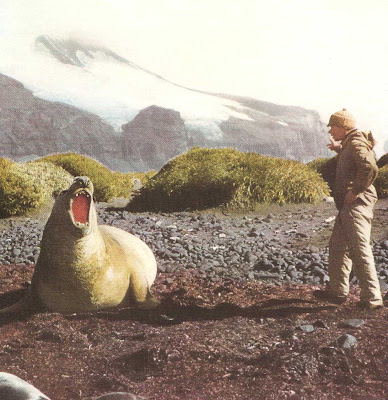The Platypus by Harry Burrell. Hardcover book published by Rigby 1974, 226 pages with some black and white photographs as well as a few colour photographs and a few black and white illustrations.
“Although the platypus is probably the most fascinating of all Australia’s native mammals, the full facts about its body structure and life habits eluded scientific observers for many years. More than one hundred years passed after the first sightings before a naturalist was able to prove conclusively that the animal did lay eggs and suckle its young; even today there are many details of the animal’s life and habits which are not fully understood. Few men have made a more intensive study of the platypus than the New South Wales naturalist Harry Burrell, who spent more than twenty-five years observing the animal in its native habitat and in the laboratory and was the first man to successfully keep platypuses in captivity. Burrell’s book, the culmination of his study, has been widely praised for the new information it brought to light and for its absorbing account of the animal’s discovery and early theories concerning its curious combination of mammal and reptile-like features. Chapters deal with the body structure of the platypus, its nervous system and sensory perception, distribution, nest, burrow and breeding habits, the role of the poison spur and its life cycle.”

Yes, the male Ornithorhynchus anatinus has a poisonous spur* on its hind limbs. In other words, don’t touch. This is good advice regarding any wild animal and as a rule is something that I personally adhere too as much as I possibly can. You’re probably thinking that the likelihood of encountering a crazed attacking Playtypus in the wild is a very slim prospect, which for most people here in Australia and overseas is indeed the case, but you never know.
Here in rural Victoria where I live, we do of course have varying amounts of wildlife in the… ummmm… wild. This is something that pleases me whenever I encounter it. From the frogs in the creek, to the blue tongue lizard living in my backyard, to the Swamp Wallabies living a few hundred metres away, I enjoy their company. Recently I have been made aware of a spot where Platypus (Platypi? Platypuses?) are easily viewable, not that far from town… far enough to require transport, but close enough for a quick visit. So myself, a fellow bookseller (James from Black Duck books, here in Clunes) and another local (Geoff) ventured out one cold and wet Sunday afternoon to see what we could find. We found the spot easily enough but the Platypus were not so easy to locate. The creek where they abide was a torrent due to heavy rain, and we all agreed that our timing was probably a little too early in the day. Undeterred, we have vowed that we will go back when there is a little less pervasive moisture.
So a few weeks later i find this book about the Platypus. Fresh in my mind, the subject matter immediately grabbed my attention and my purchase. This is a subject that people are interested in and I feel confidant that this book will easily sell.
Whilst writing this blog entry I did a quick search of eBay to find my listing of this book and was very pleased to find that it is the only listing of this title at this point in time on eBay. It’s always disappointing to find multiple copies, sometimes slightly cheaper, available for sale. A single listing of a title is always preferred… especially if it’s mine.
* Whoops. Apparently the spur is Venomous not Poisonous.




















